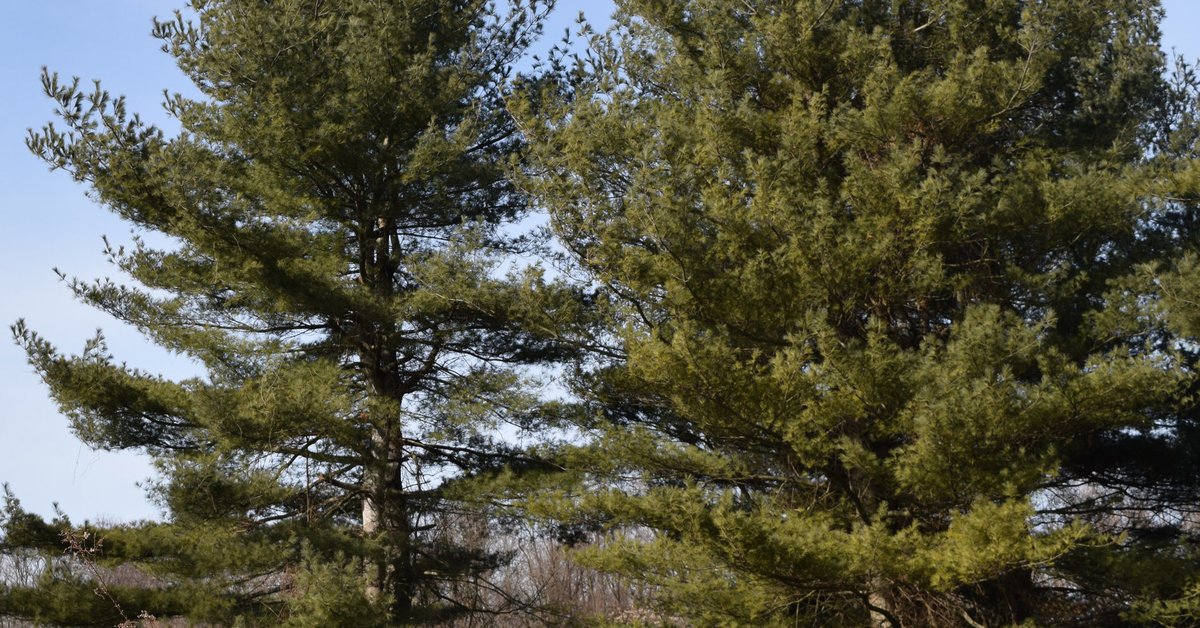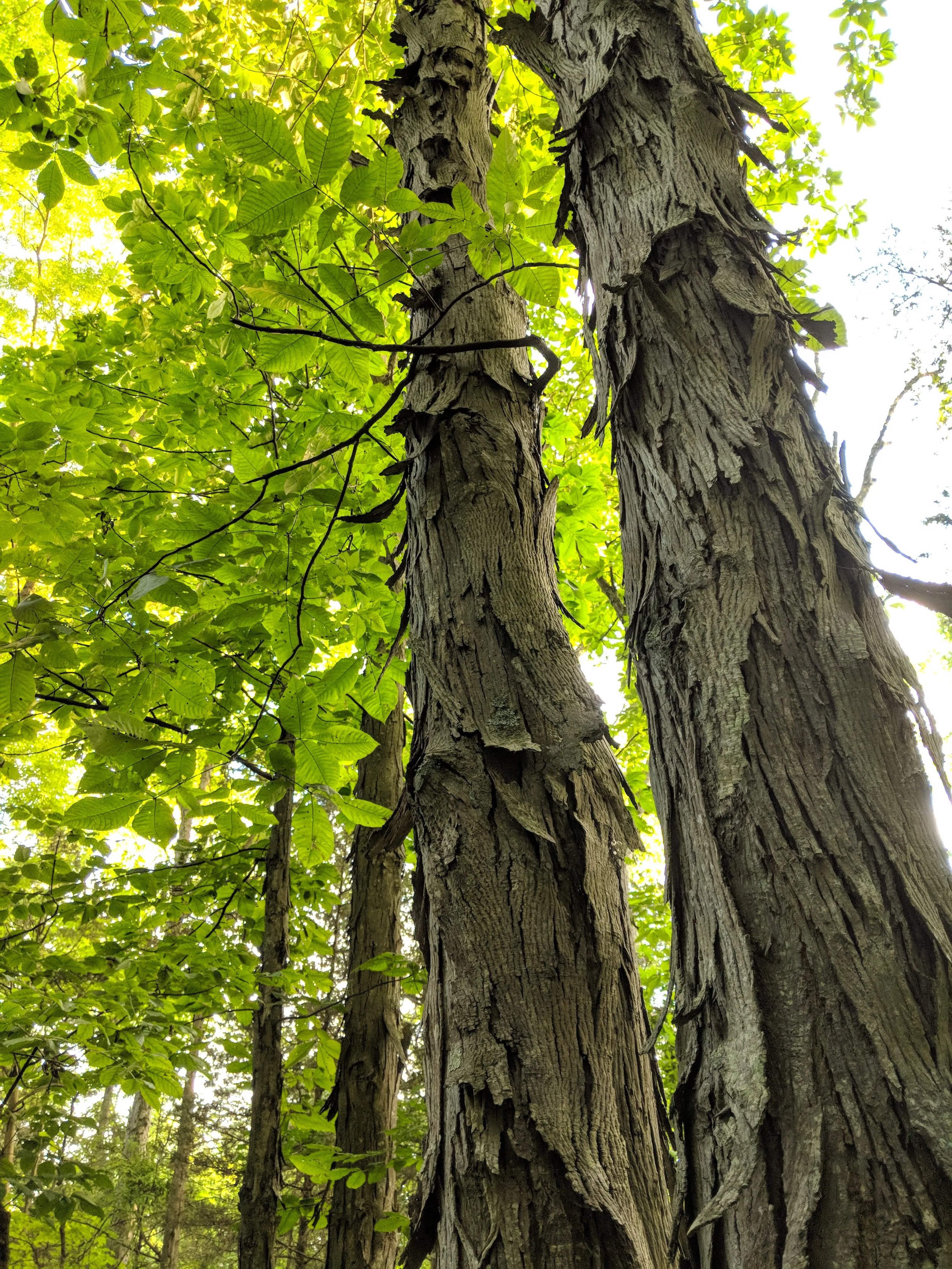
Tree Inventories
Join us on a journey into the world of trees. As part of our commitment to bat conservation, we conduct a comprehensive assessment of tree species within acoustic/visual bat monitoring sites. By collecting and analyzing this data, we aim to uncover the correlation between the presence, absence, and abundance of native tree species and the populations of the native bat species in our region.
Beyond our contribution to bat monitoring efforts nationwide, this research holds the key to unlocking a deeper understanding of the intricate relationships between bats and their arboreal homes on a local level. Through our rigorous inventorying, we seek to shed light on the diverse tree populations that shape our landscapes, empowering land managers, conservationists, and ourselves with insights to enhance bat conservation strategies.
Certain trees serve as precious havens for bats, providing crucial roosting sites, foraging grounds, and even spaces for courtship rituals. By meticulously identifying and documenting the types of trees present or absent in our region, we can develop targeted strategies to optimize the conditions for bats to flourish within their natural habitats.
Join us in our exploration of these woodlands and forests and be part of an initiative that not only safeguards bats but also nurtures the very trees that sustain them. As part of our commitment to community involvement and education, local students who are interested in pursuing environmental science, forestry, and/or ecology careers are encouraged to Volunteer With Us. Together, we can create a thriving ecosystem where bats and trees harmoniously coexist, ensuring a brighter future for both species and the delicate balance of our natural world.
Drake et al. Diversity 2020, 12, 76; doi:10.3390/d12020076
Some Important Tree Species
-

Shagbark Hickory
Shagbark Hickories, Carya ovata, make ideal summer roosting habitats for bat species, such as Little Brown Myotis, because of their loose, exfoliating bark.
-

Northern Red Oak
Northern Red Oaks, Quercus rubra, have highly desirable foliage that makes great summer roosting habitats for species such as the Eastern Red Bat.
-

Eastern Black Walnut
East Black Walnuts, Juglans nigra, provide sheltered and desirable roosting habitat for maternal colonies during summer months.
-

Eastern White Pine
Eastern White Pines, Pinus strobus, provide dense foliage and protection that serves as ideal roosting habitat during summer months.
Native Deciduous Tree List
-
Black maple (Acer nigrum)
Boxelder maple (Acer negundo)
Red maple (Acer rubrum)
Mountain maple (Acer spicatum)
Silver maple (Acer saccharinum)
Striped maple (Acer pensylvanicum)
Sugar maple (Acer saccharum)
-
Black oak (Quercus velutina)
Bur oak (Quercus macrocarpa)
Chestnut oak (Quercus montana)
Dwarf chestnut oak (Quercus prinoides)
Northern red oak (Quercus rubra)
Pin oak (Quercus palustris)
Post oak (Quercus stellata)
Scarlet oak (Quercus coccinea)
Scrub oak (Quercus ilicifolia)
Swamp white oak (Quercus bicolor)
White oak (Quercus alba)
Yellow oak (Quercus muehlenbergii)
American beech (Fagus grandifolia)
American chestnut (Castanea dentata)
-
Bitternut hickory (Carya cordiformis)
Pignut hickory (Carya glabra)
Shagbark hickory (Carya ovata)
Butternut (Juglans cinerea)
East black walnut (Juglans nigra)
Mockernut hickory (Carya tomentosa)
-
American hophornbeam (Ostrya virginiana)
Gray birch (Betula populifolia)
Mountain paper birch (Betula cordifolia)
Paper birch (Betula papyrifera)
River birch (Betula nigra)
Yellow birch (Betula alleghaniensis)
American ironwood (Carpinus caroliniana)
-
Balsam poplar (Populus balsamifera)
Big-toothed aspen (Populus grandidentata)
Cottonwood (Populus deltoides)
Quaking aspen (Populus tremuloides)
Swamp cottonwood (Populus heterophylla)
Black willow (Salix nigra)
-
Black cherry (Prunus serotina)
Fire cherry (Prunus pensylvanica)
Canadian serviceberry (Amelanchier canadensis)
Downy shadbush (Amelanchier arborea)
Intermediate shadbush (Amelanchier intermedia)
Low shadbush (Amelanchier humilis)
Mountain shadbush (Amelanchier bartramiana)
Round-leaved shadbush (Amelanchier sanguinea)
Smooth shadbush (Amelanchier laevis)
Bilmore hawthorn (Crataegus biltmoreana)
Brainerd’s hawthorn (Crataegus brainerdii)
Common fireberry hawthorn (Crataegus chrysocarpa)
Dotted hawthorn (Crataegus punctata)
Frosted hawthorn (Crataegus pruinosa)
Entangled hawthorn (Crataegus intricata)
Large-seeded hawthorn (Crataegus macrosperma)
Northern downy hawthorn (Crataegus submollis)
Rough hawthorn (Crataegus scabrida)
Scarlet hawthorn (Crataegus coccinea)
Succulent hawthorn (Crataegus succulenta)
Zigzag hawthorn (Crataegus irrasa)
American mountain-ash (Sorbus americana)
Northern mountain-ash (Sorbus decora)
-
Flowering dogwood (Cornus florida)
Kousa dogwood (Cornus kousa)
Pagoda dogwood (Cornus alternifolia)
Silky dogwood (Cornus amomum)
-
Black ash (Fraxinus nigra)
Green ash (Fraxinus pennsylvanica)
White ash (Fraxinus americana)
-
American elm (Ulmus americana)
Rock elm (Ulmus thomasii)
Slippery elm (Ulmus rubra)
-
American linden (Tilia americana) – Malvaceae
American persimmon (Diospyros virginiana) – Ebenaceae
American sycamore (Platanus occidentalis) – Platanaceae
Black locust (Robinia pseudoacacia) – Fabaceae
Black tupelo (Nyssa sylvatica) – Nyssaceae
Cucumber magnolia (Magnolia acuminata) – Magnoliaceae
Tulip tree (Liriodendron tulipifera) – Magnoliaceae
Common hoptree (Ptelea trifoliata) – Rutaceae
Hackberry (Celtis occidentalis) – Cannabaceae
Red mulberry (Morus rubra) – Moraceae
Sassafras (Sassafras albidum) – Lauraceae
Smooth sumac (Rhus glabra) – Anacardiaceae
Staghorn sumac (Rhus typhina) – Anacardiaceae
Winged sumac (Rhus copallinum) – Anacardiaceae
Sweetgum (Liquidambar styraciflua) – Altingiaceae
Yellow buckeye (Aesculus flava) – Sapindaceae
Native Coniferous Tree List
-
Eastern white pine (Pinus strobus)
Jack pine (Pinus banksiana)
Pitch pine (Pinus rigida)
Red pine (Pinus resinosa)
Scotch pine (Pinus sylvestris)
Shortleaf pine (Pinus echinata)
Virginia pine (Pinus virginiana)
Black spruce (Picea mariana)
Red spruce (Picea rubens)
White spruce (Picea glauca)
Balsam fir (Abies balsamea)
Eastern hemlock (Tsuga canadensis)
Larix laricina (Eastern larch)
-
Atlantic white cedar (Chamaecyparis thyoides)
Carolina hemlock (Tsuga caroliniana)
Common juniper (Juniperus communis)
Eastern red cedar (Juniperus virginiana)
Northern white cedar (Thuja occidentalis)
Bald cypress (Taxodium distichum)
-
American holly (Ilex opaca) – Aquifoliaceae
Canadian yew (Taxus canadensis) – Taxaceae



